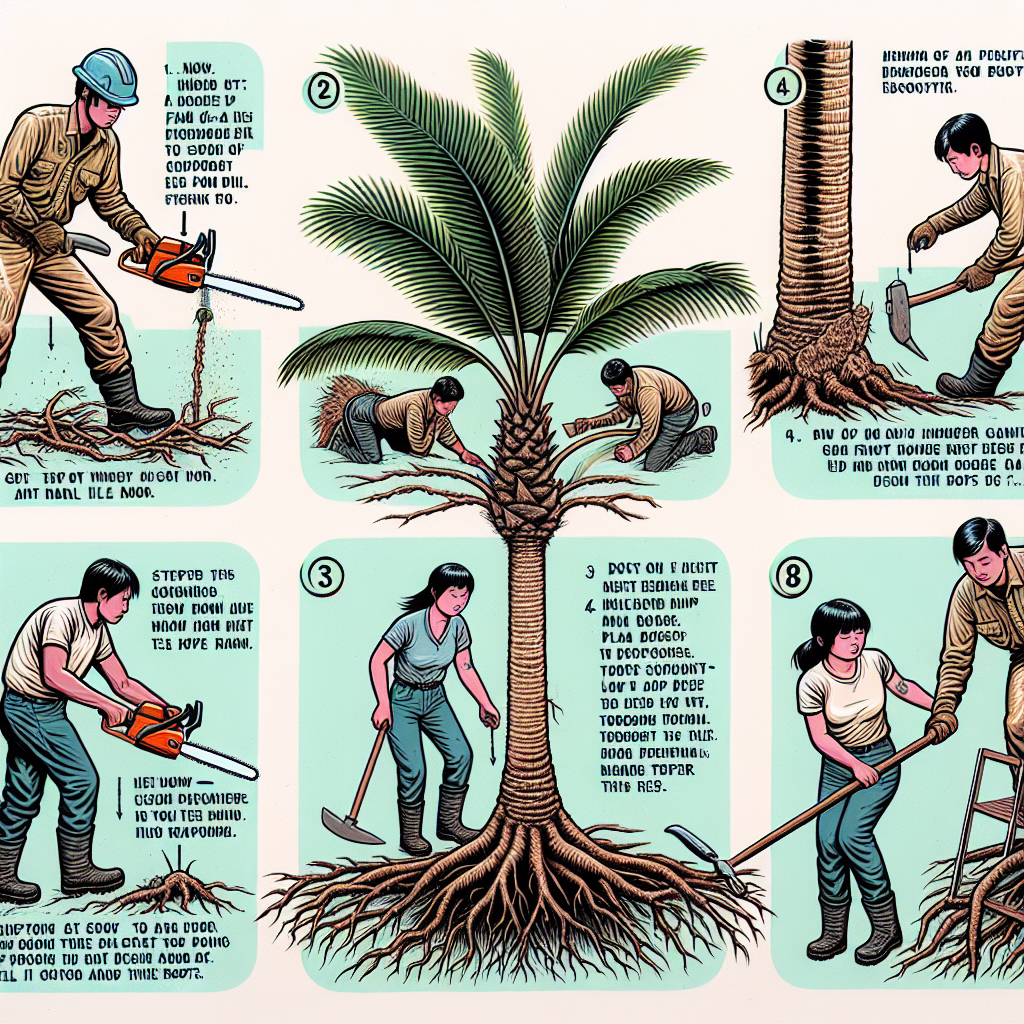
How to remove palm tree roots
Understanding Palm Tree Roots
Palm trees are beautiful additions to landscapes, but their extensive root systems can cause problems when it comes time to remove them. Before delving into the how to remove palm tree roots, it's essential to understand why their roots can be problematic. Palm tree roots can spread horizontally, and depending on the species, they may penetrate deep into the ground, affecting nearby structures, pipes, and soil stability.
Why Remove Palm Tree Roots?
There are several reasons why someone might want to remove palm tree roots:
- Safety Concerns: Exposed roots can create tripping hazards on pathways and driveways.
- Damage to Structures: Roots can undermine foundations, sidewalks, or driveways.
- Landscaping Needs: The roots may obstruct new plantings or landscaping projects.
- Tree Removal: Once a palm tree is removed, the roots may need to be addressed to prevent regrowth.
Preparing to Remove Palm Tree Roots
Before tackling the process of removing palm tree roots, proper preparation is crucial. Taking a few preliminary steps can ensure a smoother operation.
Assessing the Situation
Examine the area around the palm tree to gauge the extent of the roots:
- Identify the type of palm tree and understand its root growth pattern.
- Check how close the roots are to existing structures and utilities.
- Determine whether the roots are shallow or deep, which affects your removal strategy.
Gathering the Necessary Tools
To efficiently carry out the task of removing palm tree roots, you'll need the following tools:
- Shovel
- Pickaxe
- Mattock
- Garden saw or chainsaw
- Water hose or shovel to loosen the soil
- Gloves and safety goggles
Methods for Removing Palm Tree Roots
There are various techniques to tackle the removal of palm tree roots. Your choice will depend on how established the roots are and how much of the root system you aim to remove.
Manual Removal
This method is labor-intensive but can be effective for smaller root systems. Follow these steps:
- Water the area around the roots to soften the soil and make digging easier.
- Use a shovel to carefully dig around the roots, exposing them without damaging them.
- Once exposed, use a pickaxe to sever the roots.
- Continue removing soil and roots, ensuring you take out as many as possible.
- Fill the hole with soil once you have sufficiently removed the roots.
Using Tools for Efficiency
If dealing with more extensive root systems, consider using power tools:
- Chainsaw: For larger palm tree trunks, a chainsaw will help cut through thick roots quickly.
- Stump Grinder: This tool can grind down remaining stump and roots below ground level.
Chemical Methods
In some cases, chemicals may be used to aid in root removal. However, these chemicals can impact surrounding plants and soil health. Use with caution:
- Root Killers: These chemicals dissolve the root structure and could be effective for larger, harder-to-remove roots.
- Salt: A homemade concoction, while not highly recommended, can be applied to help deteriorate root systems.
"While chemicals can offer a solution, they should always be considered a last resort due to their potential environmental impact."
Considerations Before Starting
Before starting the removal process, keep the following considerations in mind to avoid potential pitfalls:
Understanding Your Local Regulations
In some areas, there might be local regulations governing tree removal and disposal. It's essential to check with local authorities to ensure compliance.
Impact on Neighbors
Removing palm tree roots can affect surrounding properties. Notify your neighbors beforehand, especially if the removal could disrupt utilities or landscaping.
Environmental Considerations
Think about the overall effect of removing palm tree roots. The tree may serve as a habitat for wildlife or contribute to soil health. Consider alternatives or seek advice from an arborist if unsure.
Post-Removal Care
Once you have successfully tackled palm tree root removal, the next step is post-removal care. This ensures a healthy landscape and prevents future issues.
Replenishing the Soil
After removing roots, refortifying the soil can encourage new growth where desired or prevent unwanted plants:
- Add compost or organic matter to improve soil health.
- Bury any exposed roots below the surface for decomposition.
- Level the area to prevent pooling or uneven settling.
Monitor for Regrowth
Even after thorough removal, some palm trees may produce suckers or new roots. Regularly check the area for any signs of regrowth, and remove them promptly to avoid complications.
Conclusion
Removing palm tree roots may seem like a daunting task, but with the proper tools, preparation, and techniques, you can navigate the process effectively. Always remember to assess the situation, consider potential impacts, and follow through with proper post-removal care. Whether you're a seasoned gardener or a homeowner dealing with landscaping challenges, knowing how to remove palm tree roots equips you with the knowledge to maintain a safe and beautiful outdoor space.
By Guest, Published on September 18th, 2024